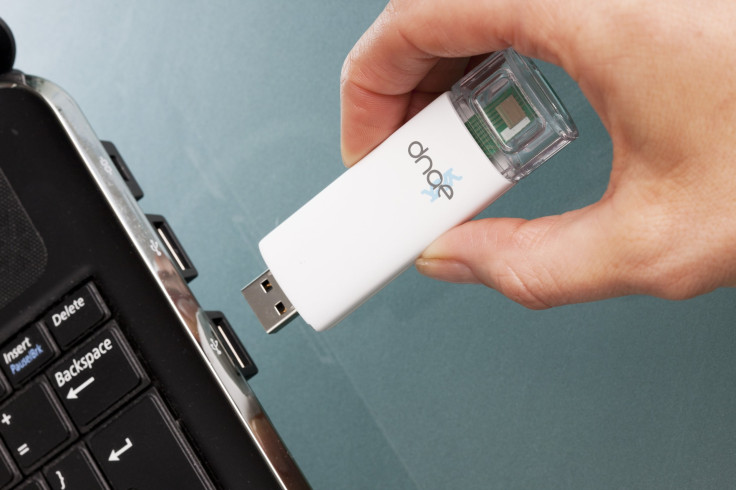HIV Virus: Check Your Blood For Infection At Home Using USB Device

A USB stick is a new tool to fight the spread of HIV and help keep those infected as healthy as possible.
Imperial College London scientists and health care technology company DNA Electronics have developed a device that detects HIV in a patient's drop of blood by analyzing pH levels. Then, when the device is connected through the USB port, it sends an electronic signal that shows the results on a computer or handheld, according to a statement from the college.
People on antiretroviral medication are able to live longer and longer but require monitoring to make sure the medication is working and to “minimize the emergence of drug-resistant virus,” an article published in the journal Scientific Reports said. But that monitoring requires a large laboratory device. A small gadget that can measure the amount of the HIV virus in a person’s blood sample can make the process easier, especially in areas where the disease is widespread but medical infrastructure is limited, like sub-Saharan Africa.
“The challenges that inaccessible, and often unaffordable, viral load technologies pose to the delivery of high quality care for HIV-1 patients are now well recognised, and improving diagnostics is now a key part of global strategies to combat the infection,” the study said. But it added that new and cost-effective technologies to measure viral load usually “require a desktop instrument and laboratory processing.” And other routine HIV tests only focus on antibodies, which simply tell if a person is infected rather than their viral load.
With the USB technology, nothing needs to be refrigerated or connected to a power supply other than the computer or handheld device it is attached to, the study said. It is also disposable, cheap and easy to use, and gives the patient results in less than 30 minutes — that’s compared to the minimum three days current tests usually take.
“We have taken the job done by this equipment, which is the size of a large photocopier, and shrunk it down to a USB chip,” senior author Dr. Graham Cooke said in the college’s statement.
The World Health Organization puts the total death toll of HIV at 35 million, and says almost 1 percent of all adults ages 15 to 49 worldwide have the virus, with the local tally fluctuating between regions. It is worst in sub-Saharan Africa, where almost one in 25 adults have it, “accounting for nearly 70 percent of the people living with HIV worldwide.”
Although HIV is on the decline in the U.S., the Centers for Disease Control and Prevention estimate that more than 1.2 million people in the United States have the virus — which if left untreated can lead to AIDS — and about one of every eight of those people don’t know they have it. In particular, gay and bisexual men and intravenous drug users are at risk for contracting HIV, which stands for human immunodeficiency virus. The virus, spread through bodily fluids including those exchanged during sexual contact, attacks the body’s immune system, weakening it, and over time can prevent it from fighting off other diseases and infections. While HIV cannot be cured, it can be managed.
In addition to helping those infected with the virus keep an eye on their condition, there are benefits in diagnosis. The college said, “Finding out quickly if a patient, particularly a baby, is infected with the virus is crucial to their long term health and survival.”
The USB is not the first kind of home blood test to help manage a chronic disease. Devices exist, for example, to test blood sugar levels, information diabetics use to control their symptoms.
According to Imperial College London, the researchers are now looking into whether their new USB device can test for other contagious viruses, like hepatitis.
Source: Cooke GS, Gurrala R, Lang Z, et al. Novel pH sensing semiconductor for point-of-care detection of HIV-1 viremia. Scientific Reports. 2016.
Published by Medicaldaily.com



























